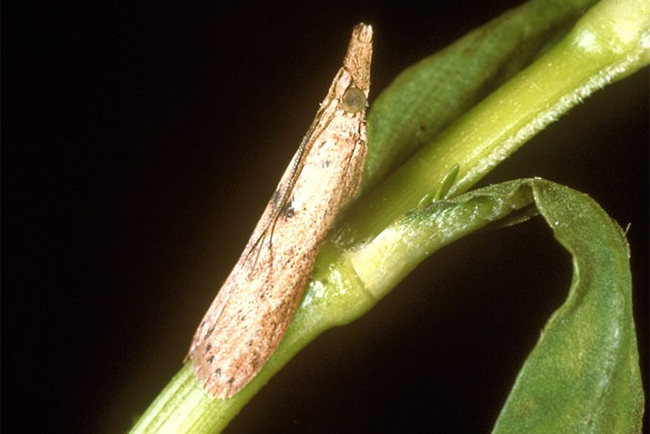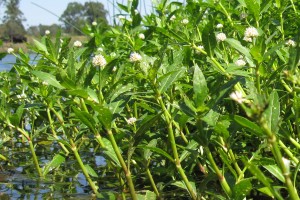Alligator weed moth
History in New Zealand
Alligator weed moths are native to South America, and they were first imported from Australia (as Vogtia malloi) by the DSIR in 1982. The name was subsequently changed to Arcola malloi but this was changed again to Macrorrhinia endonephele in 2020. The first shipment was destroyed when it was found to be diseased. Two additional shipments were imported in 1983 and 1984. These were disease-free and their progeny were released at multiple sites, but the moth failed to establish at any of them. A fourth shipment was imported in 1987. The progeny was released at 10 sites (spread throughout the range of the weed) and this time the moth established successfully. Alligator weed moths can now be found on some infestations in Northland and Auckland but are not as common as the other biological control agent for alligator weed (see Alligator weed beetle).
How would I find/recognise it and what is its lifecycle?
You are unlikely to see an adult moth as they are nocturnal and hide away during the day. The pale brown moths have large black eyes, are about 13-14 mm long, and live for about 6-7 weeks. The females lay their eggs at night and can lay 200-300 eggs each. You may see the white oval-shaped eggs if you look on the underside of the leaves and in the leaf axils near the top of stems. The eggs are laid singly (as opposed to in batches).
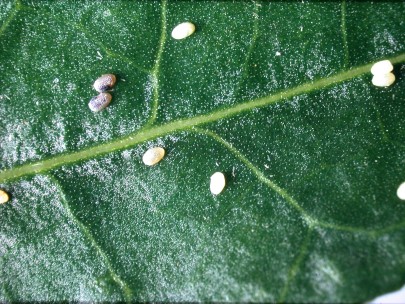
Image: alligator weed moth eggs.
Caterpillars hatch out within a week and immediately bore into the stem and seal the entry hole with silk. To see these caterpillars, you need to split apart some wilted stems.
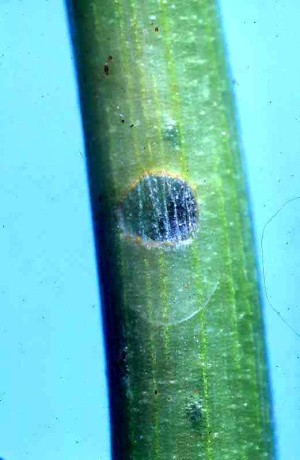
Image: alligator weed moth larva entry hole sealed with silk.
The caterpillars are whitish or light amber in colour and as they grow, they develop brownish stripes along their bodies. They feed for about a month before moving down low into a stem to pupate. Just before spinning a silken cocoon, each caterpillar seals off a pupal chamber and chews a hole (about 2 mm in diameter) through the stem, leaving a thin membrane. You may notice stems that appear to have a small round window in them. The pupae are initially amber in colour but turn dark brown.
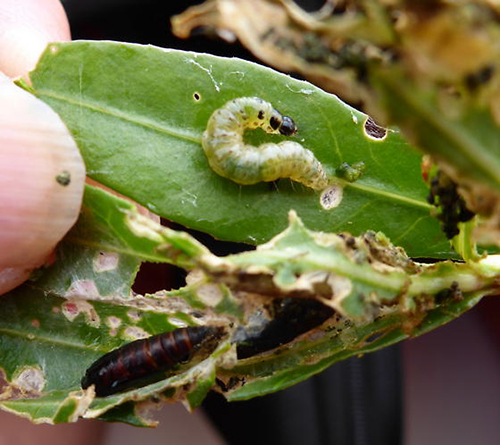
Image: alligator weed moth larva and pupa. Photo credit: Marylyn Feaver, University of Florida.
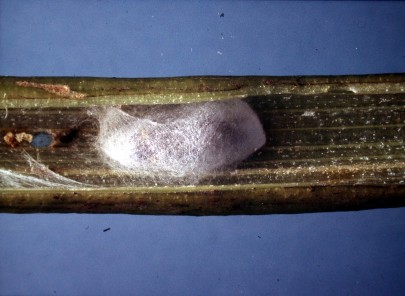
Image: alligator weed moth in a silken cocoon.
A bit over a week later, moths hatch out and break through the thin membrane to escape from the stem. A full generation can be completed in as few as 6-7 weeks at high temperatures and several generations may be produced each year.
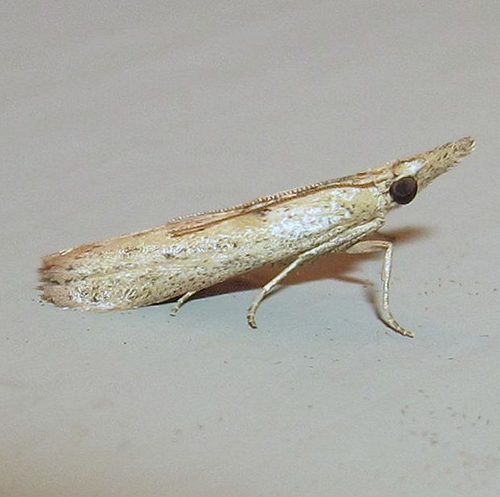
Image: alligator weed moth (Marcrorrhinia endonephele). Photo credit: Peter Homan, University of Florida.
How does it damage alligator weed?
The adult moths do not feed on alligator weed at all. They feed on the nectar of various flower species. The caterpillars are the damaging stage and they feed inside the stems causing them to collapse. Each caterpillar can destroy as many as nine stems.
Will it attack other plants?
No, it is extremely unlikely that alligator weed moths will damage anything other than alligator weed.
How effective is it?
Large populations of the moth can cause considerable damage to alligator weed and each year, they successfully control the weed in some lakes and ponds. The moths are not able to control the weed in flowing water that is regularly flooded (they get washed away), and low temperatures do not appear to suit them either. The moth is able to move further onto land than the alligator weed beetle, but it is unable to control terrestrial infestations. In Australia and the USA, the moth is believed to make an important contribution to the successful control of alligator weed by exerting pressure on the weed growing on river banks and swamps and other areas too dry for the alligator weed beetle.
How can I get the most out of it?
Although the moths appear to be strong fliers, it will probably take them some time to invade all the areas where they are needed. You can accelerate dispersal by collecting the moths from well-established sites and moving them to new areas.
How do I select a release site?
Read Guidelines for selecting release sites for biocontrol agents.
How do I collect it for release at other sites?
Read Guidelines for collecting, relocating, and releasing insect biocontrol agents.
The best way to shift the moths is by collecting damaged stems in late summer. Because the stems will be wet, you will need to put them into plastic rubbish bags. Make sure that you leave the stems inside the plastic bags for only an hour or two and keep them cool, otherwise, they may deteriorate rapidly. You will need to wedge at least 2-3 rubbish bags full of infested material in amongst healthy weed at each new site.
How do I manage the release sites?
Avoid using other control measures in areas where the moths are present as these may prove harmful to the moth.
Key Contact


